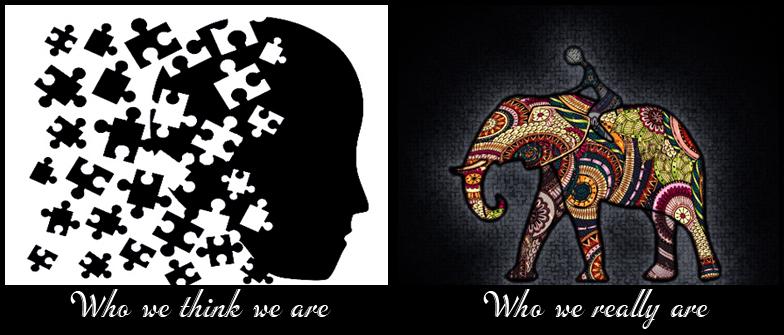
If we know about how our minds work, we can be intentional about influencing our own thinking and feeling patterns. We can evaluate reality more clearly, make better decisions, and improve our ability to achieve goals, thus gaining greater agency, the quality of living intentionally.
Ok, then how do our minds work? Intuitively, our mind feels like a cohesive whole. We perceive ourselves as intentional and rational thinkers. Yet cognitive science research shows that in reality, the intentional part of our mind is like a little rider on top of a huge elephant of emotions and intuitions.
Roughly speaking, we have two thinking systems. Daniel Kahneman, who won the Nobel Prize for his research on behavioral economics, calls them System 1 and 2, but I think “autopilot system” and “intentional system” describe these systems more clearly. The term “intentional system” in particular is useful as a way of thinking about living intentionally and thereby gaining greater agency.
The autopilot system corresponds to our emotions and intuitions. Its cognitive processes take place mainly in the amygdala and other parts of the brain that developed early in our evolution. This system guides our daily habits, helps us make snap decisions, and reacts instantly to dangerous life-and-death situations, like saber-toothed tigers, through the freeze, fight, or flight stress response. While helping our survival in the past, the fight-or-flight response is not a great fit for modern life. We have many small stresses that are not life-threatening, but the autopilot system treats them as tigers, producing an unnecessarily stressful everyday life experience that undermines our mental and physical wellbeing. Moreover, while the snap judgments resulting from intuitions and emotions usually feel “true” because they are fast and powerful, they sometimes lead us wrong, in systemic and predictable ways.
The intentional system reflects our rational thinking, and centers around the prefrontal cortex, the part of the brain that evolved more recently. According to recent research, it developed as humans started to live within larger social groups. This thinking system helps us handle more complex mental activities, such as managing individual and group relationships, logical reasoning, probabilistic thinking, and learning new information and patterns of thinking and behavior. While the automatic system requires no conscious effort to function, the intentional system takes deliberate effort to turn on and is mentally tiring. Fortunately, with enough motivation and appropriate training, the intentional system can turn on in situations where the autopilot system is prone to make errors, especially costly ones.
Here’s a quick visual comparison of the two systems:
| Autopilot System | Intentional System |
|---|---|
|
|
The autopilot system is like an elephant. It’s by far the more powerful and predominant of the two systems. Our emotions can often overwhelm our rational thinking. Moreover, our intuitions and habits determine the large majority of our life, which we spend in autopilot mode. And that’s not a bad thing at all – it would be mentally exhausting to think intentionally about our every action and decision.
The intentional system is like the elephant rider. It can guide the elephant deliberately to go in a direction that matches our actual goals. Certainly, the elephant part of the brain is huge and unwieldy, slow to turn and change, and stampedes at threats. But we can train the elephant. Your rider can be an elephant whisperer. Over time, you can use the intentional system to change your automatic thinking, feeling, and behavior patterns, and become a better agent in achieving your goals.
I hope this information fills you with optimism. It does me. This is what Intentional Insights is all about – learning how to be intentional about using your rider to guide your elephant.
- What steps do you think you can take to evaluate where your emotions and intuitions may lead you to make mistakes?
- What can you do to be prepared to deal with these situations in the moment?
- What can you do to be an elephant whisperer and retrain your elephant to have thinking, feeling, and behavior patterns that match your long-term goals?
—
Dr. Gleb Tsipursky is the author of the Amazon bestseller The Truth-Seeker’s Handbook: A Science-Based Guide. He is an Assistant Professor at The Ohio State University, President of the nonprofit Intentional Insights, and co-founder of the Pro-Truth Pledge.




